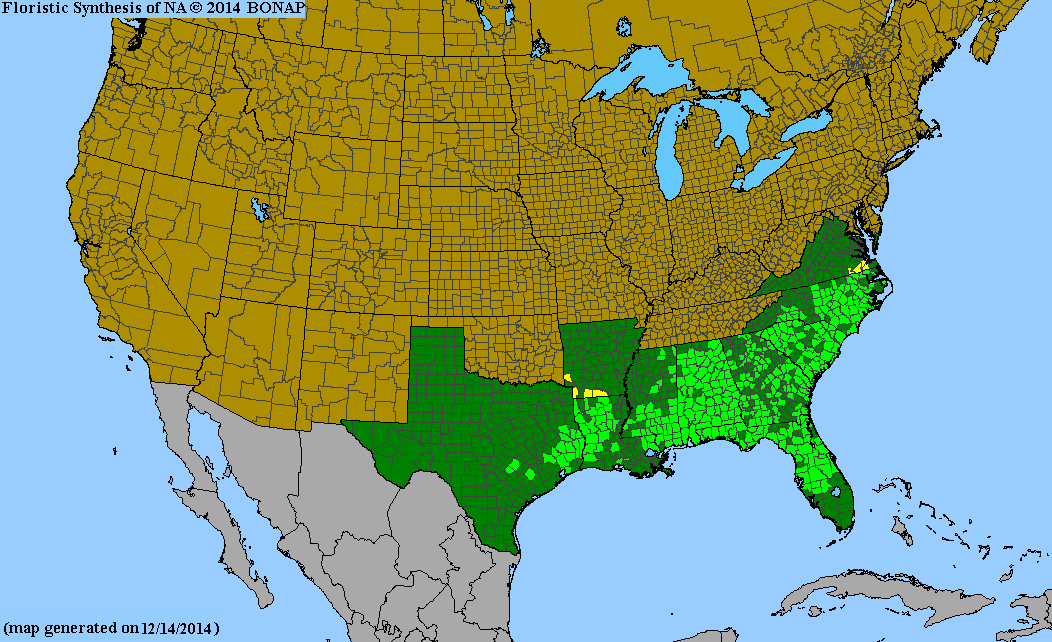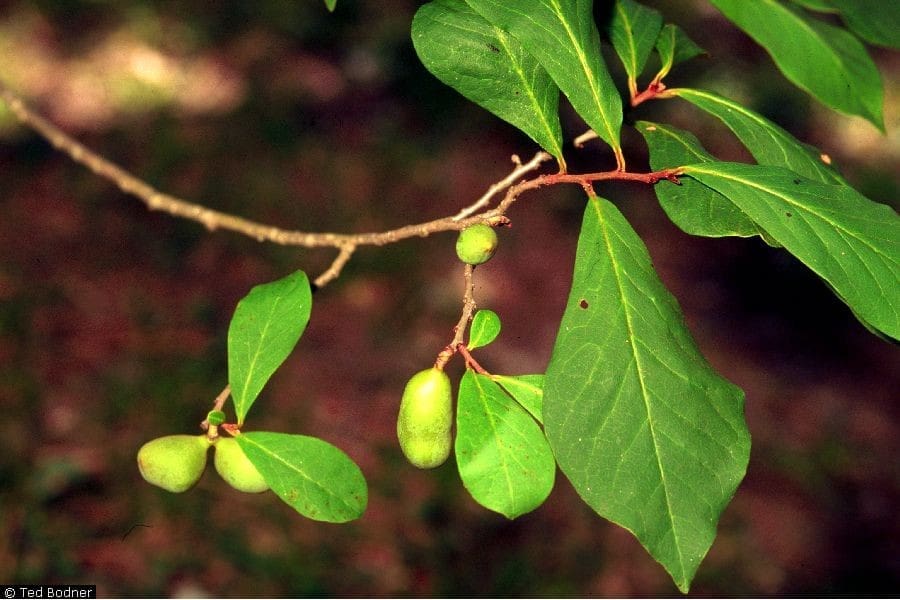Annonaceae
small-flowered pawpaw
Asimina parviflora
Synonyms
Orchidocarpum parviflorum
Porcelia parviflora
Uvaria parviflora
Other Common Names
small-fruited pawpaw, dwarf pawpaw
Plant Type
Shrub (less than 10 ft)
Life Cycle
Perennial
Typical Size
6-8 ft. tall
2-6 ft. wide
Inolerant of
Dry Soil
Propagation
By seed, By air-layering
Plant Propagation Notes
Propagate by layering or root cuttings.
Plant Planting Notes
They have a long taproot so transplanting is difficult. Pawpaws need some babying to establish but are worth the effort.
Plants/Diseases
No significant pests or disease.
Wildlife Benefits
Host plant for butterfly larvae, Fruit/seeds for birds
Leaves
Leaf blades are obovate to oblanceolate, 3-6 inches long by 1-3 inches wide, with entire leaf margins and hairs along the veins.
Flowers
Flowering occurs on the previous years shoots before or during leaf emergence. The solitary flowers are bell shaped with 6 petals and ranging from purple/lavender to brown/copper, and approximately 1-3 inches diameter.
Fruit
The edible, 1-3 inch long cylindrical berries are edible, being harvested in the summer.
Bark
The new shoots are red to brown and covered with densely matted woolly hairs. Bark become smooth as it matures and becomes gray-brown with warty lenticels.
Toxicity
No known toxicity.
Edibility
Fruits are sweet and can be used raw or cooked.

USDA Hardiness Zones
7, 8, 9, 10
Light Exposure
Full Sun, Part Sun/Shade
Soil Moisture
Moist
Soil Drainage
Well-drained
Soil pH
Acidic (less than 6.0), Neutral (6.0-8.0)
Native in South Carolina?
Yes
Plant Native Habitat
Sands, sandy loams, or sandy alluvium of rich woods, alluvial terraces, and upland dry woods
Global Conservation Status (NatureServe)
Secure (G5)
Federal Conservation Status (USFWS)
Not Listed
Distribution Notes
Common in the SC Coastal Plain and Piedmont, and Rare in the Mountains

